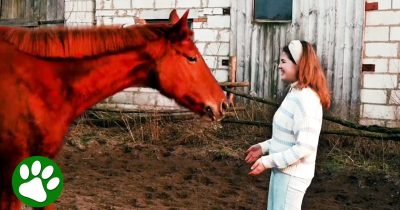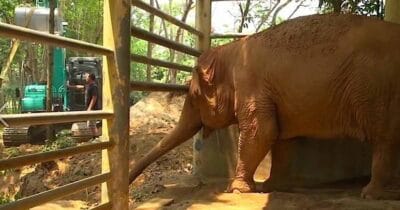
Diego, a Galapagos giant tortoise, is finally retiring after wild sex life single-handedly saved his species from extinction.
According to The Washington Post, the Española giant tortoise was on the verge of extinction — there were less than 20 tortoises left in the entire world — when a hero was flown to Española Island, an island that is a part of the Galapagos Islands.
Diego’s mission was simple. The wise, old tortoise was to have sex and lots of it.
Prior to Diego’s arrival he lived at the San Diego Zoo. He was brought to the zoo between 1928 and 1933. Diego, part of the Chelonoidis hoodensis species, lived at the zoo for decades before his species became critically endangered and he was called upon to help.
The giant tortoise was sent to live with the remaining tortoises, two males and 12 females, at the Charles Darwin Research Station where he played a major role in scientists’ breeding program.
Now, after 40 years Ecuador’s Environmental Ministry announced the breeding program was coming to an end and a large part of it was due to Diego’s sex drive.
The Director of the Galapagos National Park, Jorge Carrión said in a statement, that not only did the tortoise population grow during the past four decades, but so did the island’s ecosystem.
In addition to the recovery of the giant tortoise population, which went from 15 to 2,000 thanks to this program, the management actions implemented for the ecological restoration of the island — including the eradication of introduced species and the regeneration of cacti through Galápagos Verde 2050 project — have helped to ensure that the island’s ecosystems currently have adequate conditions to support the growing population of tortoises.
At the end of 2019, scientists conducted a census and came to the conclusion that the island would be able to maintain the tortoise population for many, many years to come.
The species is still listed as critically endangered, but its population trend is increasing.
So what does the end of the captive breeding program mean? All of the tortoises that participated in the program, including the very sexually active Diego will be released into the wild.
However, before they join the rest of the tortoises on Española Island they will be quarantined to eliminate the risk of spreading any seed not native to the island.
While an estimated 40 percent of the current population are descendants of the over 100-year-old Diego is certainly an impressive feat, some wonder if it might cause more harm than good.
James P. Gibbs, a professor of environmental and forest biology at the State University of New York in Syracuse, said the “bottleneck effect” is concerning, but the effects it will have on the species won’t be known until down the road.
Until then, take it easy, Diego!
This is amazing news! Share this if you are glad this giant tortoise species has a second chance.






